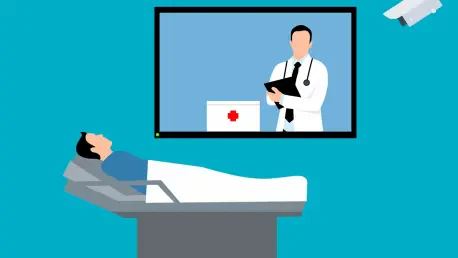The rapidly evolving landscape of healthcare has witnessed a significant shift with telemedicine emerging as a pivotal player in reducing environmental impacts. During the pandemic, telemedicine gained prominence, offering an efficient alternative to conventional in-person appointments. Recent studies reveal how this technology has effectively curbed carbon emissions, highlighting its potential to contribute positively to environmental conservation efforts. The investigation by A. Mark Fendrick and his colleagues marks a groundbreaking exploration into telemedicine’s ability to lessen the carbon footprint of healthcare—a sector responsible for a substantial portion of greenhouse gas emissions in the United States.
Environmental Impact and Potential
Reduction in Transportation-Related Emissions
Telemedicine’s ability to lessen patient travel directly translates into reduced emission levels from transportation sources, profoundly impacting the environment. With transportation being accountable for nearly a third of the carbon emissions in the United States, any significant reduction holds tremendous promise for environmental improvements. Telemedicine addresses this challenge by mitigating the need for patients to commute, thus diminishing the substantial emissions linked to gasoline-powered vehicles. Key insights from Fendrick’s study estimate that telemedicine appointments can eliminate monthly emissions equivalent to removing tens of thousands of cars from the roads.
Extrapolating this data demonstrates telemedicine’s sweeping potential in curbing emissions. According to the researchers, depending on variables like appointment substitutions and patient travel modalities, telemedicine can save from four to nearly nine million kilograms of CO2 monthly. These figures also underscore the importance of extending telehealth services to rural populations who typically travel greater distances for medical consultations. The argument grows stronger when considering telemedicine not just as an alternative but as an integral part of clinical strategies aimed at reducing healthcare’s environmental footprint.
Broader Implications for Healthcare
While the immediate benefit of reducing travel-related emissions is evident, telemedicine facilitates broader environmental gains that extend beyond its obvious implications. By cutting down on travel, telemedicine inherently helps reduce traffic congestion, minimizes energy consumption, and alleviates the wear and tear on infrastructure. Additionally, it empowers healthcare systems to maintain efficient operations without necessitating expanded physical facilities that would further strain resources. This holistic benefit package points to the prospect of telemedicine reshaping how healthcare services are delivered, making them more sustainable and environmentally friendly.
Apart from environmental considerations, telemedicine’s broader application holds significant promise for economic efficiency. Reducing physical appointments conserves resources traditionally allocated to facility maintenance and office operations. The practice also increases timeliness and accessibility of care, particularly vital in scenarios demanding swift medical interventions. Recognizing these multifaceted advantages, policymakers and healthcare providers are continuously evaluating frameworks that will optimally harness telemedicine to drive forward both economic and ecological agendas.
Future of Telemedicine in Environmental Strategies
Policy and Regulatory Considerations
The substantial environmental benefits attributed to telemedicine necessitate an examination of societal and legislative contexts to ensure its optimal deployment. Policymakers are urged to integrate telemedicine into broader environmental strategies, considering its role in alleviating healthcare’s carbon burden. Collaboration between technological developers and regulatory bodies can lead to the establishment of guidelines and practices that maximize telemedicine’s utilization as an environmentally conscious medical service. Encouraging seamless access to telehealth technologies can further amplify its impact, particularly in underserved communities facing geographical limitations.
Establishing policies that recognize telemedicine’s ecological contributions is paramount. While challenges related to data security and patient privacy remain critical, balancing these aspects with telemedicine’s environmental advantages can lead to a more comprehensive healthcare strategy. Policymakers are encouraged to prioritize these discussions, creating frameworks that facilitate a balanced approach to digital healthcare solutions. As telemedicine continues to evolve, integrating sustainable practices and technologies can prove instrumental in achieving overarching environmental goals.
Future Innovations and Considerations
Telemedicine has emerged as a transformative force in the rapidly changing healthcare landscape, particularly in reducing environmental impacts. The COVID-19 pandemic catalyzed its growth, presenting a viable alternative to traditional in-person visits. Recent research underscores the capacity of telemedicine to mitigate carbon emissions, emphasizing its role in environmental sustainability efforts. A significant study led by A. Mark Fendrick and colleagues investigates telemedicine’s efficacy in minimizing the healthcare industry’s carbon footprint, noting healthcare’s contribution to greenhouse gas emissions in the United States. This exploration highlights telemedicine’s potential not only to enhance healthcare accessibility and efficiency but also to play a critical role in addressing climate change concerns. As healthcare systems seek sustainable practices, telemedicine offers a promising path forward, balancing medical advancements with ecological preservation and opening new avenues for greener healthcare delivery.









